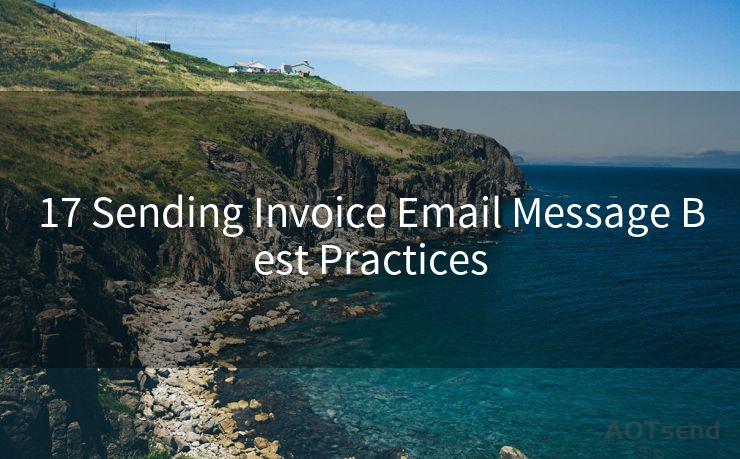17 Sending Invoice Email Message Best Practices




When it comes to sending invoice emails, it's crucial to follow best practices to ensure clarity, professionalism, and efficiency. Here are 17 essential tips to help you craft the perfect invoice email message.
1. Clear and Concise Subject Line
Start with a subject line that clearly states the purpose of the email, such as "Invoice for [Service/Product] - [Invoice Number]". This helps the recipient understand the email's content immediately.
2. Professional Greeting
Begin your email with a professional greeting, addressing the recipient by name if possible. This personal touch adds a sense of familiarity and respect.
3. Introduction to the Invoice
Briefly introduce the invoice, mentioning the services or products it covers and the date of the transaction.
4. Summary of Services/Products
Provide a quick summary of the services rendered or products sold. This helps the recipient recall the transaction details.

5. Invoice Attachment
Clearly state that the invoice is attached to the email and provide instructions on how to access it, if necessary.
6. Payment Details
Include all relevant payment details, such as the due date, payment method, and where to send the payment.
7. Terms and Conditions
If there are any specific terms and conditions related to the invoice, make sure to mention them clearly.
8. Contact Information
Provide your contact information in case the recipient has any questions or concerns about the invoice.
9. Thank You Note
End your email with a thank you note for the recipient's business. This adds a friendly and appreciative tone to your communication.
10. Avoid Unnecessary Details
Keep your invoice email concise and to the point. Avoid adding unnecessary details that might confuse the recipient.
11. Use a Professional Tone
Maintain a professional tone throughout your email. Avoid colloquial language or slang.
12. Proofread and Edit
Before sending, proofread your email for any grammatical errors or typos. This ensures a polished and professional appearance.
13. Optimize for Mobile Reading
Since many people check their emails on mobile devices, make sure your email is optimized for mobile reading. Use a responsive email template if possible.
14. Test Email Delivery
Send a test email to yourself to check how the invoice email looks and functions before sending it to the actual recipient.
15. Follow Up
If payment is not received by the due date, send a follow-up email to inquire about the status. Maintain a polite and professional tone in your follow-up communication.
16. Comply with Legal Requirements
Ensure that your invoice email complies with all legal requirements, such as including tax information and disclaimers, if applicable.
17. Use a Secure Connection
🔔🔔🔔
【AOTsend Email API】:AOTsend is a Managed Email Service for sending transactional emails. Support Email Types: reminders, authentication, confirmations, notifications, verification codes, invoices, password resets, account activations, billing statements, two-factor authentication (2FA), and one-time passwords (OTP) emails, etc. $0.28 per 1000 Emails. 99% Delivery, 98% Inbox Rate.
You might be interested in:
Why did we start the AOTsend project, Brand Story?
What is a Managed Email API, How it Works?
Best 25+ Email Marketing Platforms (Authority,Keywords&Traffic Comparison)
Best 24+ Email Marketing Service (Price, Pros&Cons Comparison)
Email APIs vs SMTP: How they Works, Any Difference?
When sending sensitive information like invoices, make sure to use a secure connection (HTTPS) to protect the data from unauthorized access.
By following these 17 best practices, you can ensure that your invoice emails are clear, professional, and effective. This not only helps in getting paid promptly but also enhances your brand's reputation and customer satisfaction.




Scan the QR code to access on your mobile device.
Copyright notice: This article is published by AotSend. Reproduction requires attribution.
Article Link:https://www.mailwot.com/p4654.html



